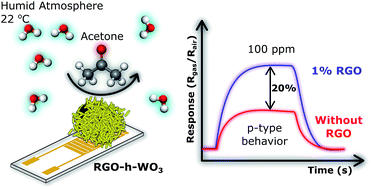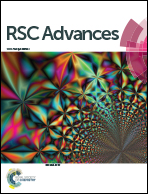Room-temperature volatile organic compounds sensing based on WO3·0.33H2O, hexagonal-WO3, and their reduced graphene oxide composites
Abstract
Nanostructured orthorhombic WO3·0.33H2O, hexagonal h-WO3 and their RGO composites (RGO-WO3·0.33H2O and RGO-h-WO3) are reported for the purpose of efficient sensing of volatile organic compounds (VOCs) (e.g. acetone, methanol, benzene, toluene, and m-xylene). The materials were prepared at 140 °C by one-pot microwave-assisted hydrothermal (MAH) synthesis from Na2WO4·2H2O and graphite oxide (in the case of composite) suspension in acid medium, without using any reducing, organic, or capping reagent. A three-dimensional (3D) nanocolumn bundles-like morphology was obtained for WO3·0.33H2O and RGO-WO3·0.33H2O. Whereas with subsequent heat treatment at 400 °C, it was possible to obtain h-WO3 and RGO-h-WO3 composites while preserving the nanocolumn bundles-like morphology. The sensing properties of these materials were investigated by exposing them to various VOCs at room temperature and at 55% relative humidity. We found that all the materials behave as a p-type semiconductor after being exposed to reducing gases. Response to 100 ppm of acetone to the RGO-h-WO3 sensor was observed to be 20% larger than the h-WO3 sensor.


 Please wait while we load your content...
Please wait while we load your content...